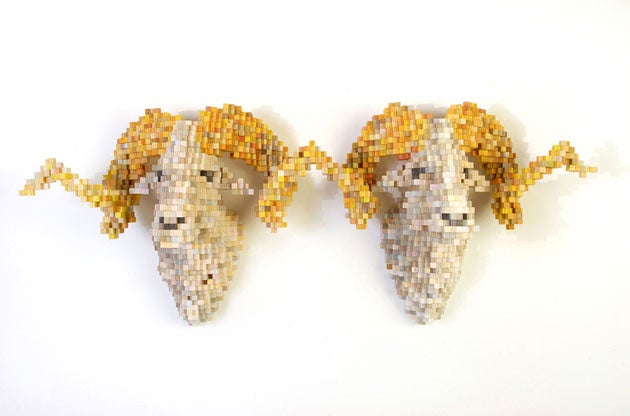Pixellated interiors: the computer style that is more than the sum of its parts

Your support helps us to tell the story
From reproductive rights to climate change to Big Tech, The Independent is on the ground when the story is developing. Whether it's investigating the financials of Elon Musk's pro-Trump PAC or producing our latest documentary, 'The A Word', which shines a light on the American women fighting for reproductive rights, we know how important it is to parse out the facts from the messaging.
At such a critical moment in US history, we need reporters on the ground. Your donation allows us to keep sending journalists to speak to both sides of the story.
The Independent is trusted by Americans across the entire political spectrum. And unlike many other quality news outlets, we choose not to lock Americans out of our reporting and analysis with paywalls. We believe quality journalism should be available to everyone, paid for by those who can afford it.
Your support makes all the difference.In 1957, Russell Kirch, a scientist at the National Bureau of Standards, took a picture of his infant son and scanned it into a computer, creating the first digital image. It was made up of a mere 176 by 176 pixels or squares - roughly one one-thousandth of the information that one would find in a photo taken with one of today's digital cameras.
Search for the perfect furniture with The Independent house and home database, powered by mydeco.
Today, of course, we check the number of pixels on our cameras and the resolution of different flat screen TVs as a matter of course, but our obsession with pixels doesn't stop at our digital equipment. Both the fashion and interiors industries have seized upon the tiny squares of colour seen in digital imagery as a trendy design statement for everything from clothes and jewellery to sofas and chopping boards.
"Giles Deacon and Dries Van Noten have both used pixilated designs and motifs in their clothing lines," says Pierre Brahm, CEO and founder of Brahm Interiors, "but the spill over into art, jewellery and homewares means that this trend will be with us for a while. In fact, it seems that, with the resurgence of Pac Man, and an 80s vibe appearing, pixels are having their moment in the art and design world."
At Brahm Interiors, Pierre has noticed pixellated design cropping up all over the place. One notable example of this, he says, can be found in the work of sculptor, Shawn Smith, who has built a series of intricate 3D art sculptures representing 2D pixel images of different objects in nature, including a very modern take on a pair of deer antlers. "He mostly works with plywood, which is dyed with ink and acrylic paint to create illusory forms that look like something out of the digital world," says Pierre.
Much like the Impressionist or Pointillist painters of the 19th century, who tried to replicate the way we see light and shape by using paint in tiny strokes or dots of colour, a pixel-effect image plays with perception by getting clearer the further away one gets from it. Often, this allows the artist or designer to be quite daring in the image that he chooses to represent.
This was evident at the Selfridges Christmas Preview recently, where a (male) member of the mydeco team reported being transfixed by the InDecent Bed from Gallery of Wonderful.
"When first seeing the bed," he said, "it was not initially clear what the photo was, but when I saw the outline of a female figure, I couldn't stop looking. I went in for closer inspection and the headboard was made up from tiny, padded squares that, up-close, looked like innocent colour blocking. It is perfect for a contemporary bedroom and is a great statement piece for a daring owner."
Pixel imagery such as the InDecent Bed allows the viewer to physically see how different elements have come together to create a coherent picture. This can be compared to the dots of colour making up George Seurat’s pointillist painting, "A Sunday Afternoon on The Island of La Grande Jatte"; colour blocking techniques, popular since the 70s; and traditional art forms such as counted-thread embroidery and some kinds of mosaic and beadwork.
The natural patterned effect of a pixel design is another alluring element of digital imagery for designers, and was the inspiration for Esti Barnes' new collection of rugs, E-Squared for Roche Bobois. These are handmade using an unusual square knotting technique, drawing on the visual rhythms of form and colour found in pixel imagery. Meanwhile, Heals' Pixel Green Kas Pixel Cushion features a dizzy pattern, which, from a distance, could easily be mistaken for some nifty embroidery work.
What began as a few squares in the first crude digital image has grown to let us enjoy increasingly high quality digital imagery. But the use of pixels has gone beyond computer technology, allowing artists and designers to reference different artistic practices, exploit pattern, and play with peoples’ perceptions in a new and highly modern way.
Emily Jenkinson is interiors writer for furniture and interior design website mydeco.com.
Join our commenting forum
Join thought-provoking conversations, follow other Independent readers and see their replies
Comments